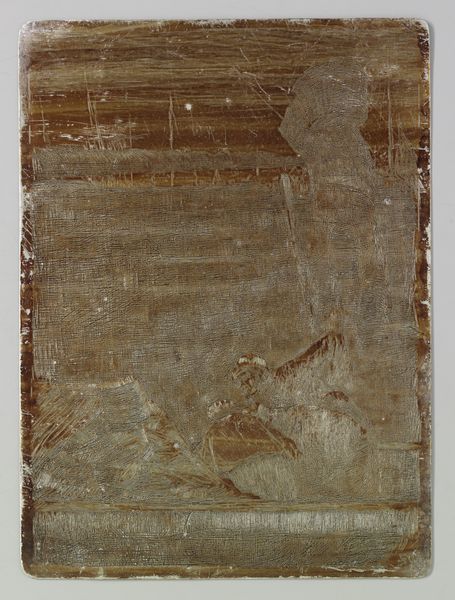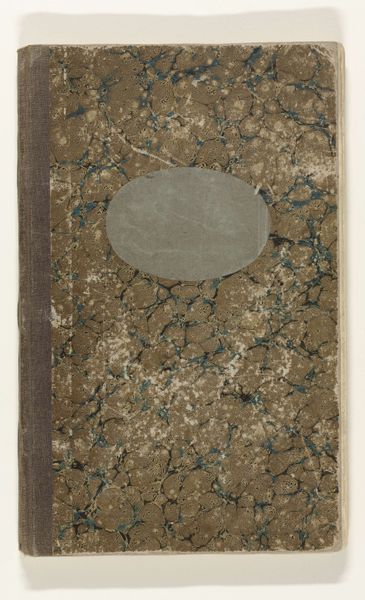
#
natural stone pattern
#
toned paper
#
flower
#
possibly oil pastel
#
carved into stone
#
underpainting
#
wooden texture
#
watercolour bleed
#
natural texture
#
organic texture
#
watercolor
Dimensions: height 426 mm, width 288 mm, thickness 25 mm
Copyright: Rijks Museum: Open Domain
Editor: So, we're looking at Jean-Baptiste Monnoyer's "Flower Basket," created sometime between 1680 and 1695. It appears to be a watercolor work. I’m immediately drawn to the seemingly random lines cutting through the faded, warm color, it creates a sense of something lost or obscured. How do you interpret this piece? Curator: Well, let's consider the social context. Flower paintings like this one were incredibly popular amongst the burgeoning merchant class in the Dutch Golden Age. These paintings weren't simply decorative. They signified wealth, cultivation, and access to rare and exotic species, projecting a certain social status for their owners. Does knowing that influence your read of it at all? Editor: Definitely, the exotic flowers do feel less random and more performative when seen in that light. Almost like a floral flex? Curator: Exactly! And think about where these paintings were displayed, often in homes becoming increasingly public spaces for entertaining and business. The flower arrangement served almost like a power play or visual claim. So how does understanding the audience, their aspirations and the performance of the image influence your response now? Editor: I see. I guess knowing about its role as a symbol within a specific social context completely shifts my perception. Now those lines appear to hint at fragility despite those symbols of wealth. Curator: Precisely! Consider, also, how museums like the Rijksmuseum acquire and frame such works, thereby influencing their ongoing cultural relevance and valuation even today. Something once used as domestic decoration now hangs in halls alongside Rembrandts, imbued with historical and national importance. Editor: I never thought of it that way! It really shows how the meaning and perception of art change drastically when you examine its history and societal role. Curator: Indeed. And, hopefully, makes you more aware of the layers that constitute all artworks and their journeys through our culture.
Comments
rijksmuseum about 2 years ago
⋮
Monnoyer was famed for his painted still lifes, which he made, amongst others, for the French king Louis XIV. This album in its original binding contains his complete oeuvre in print, in large format. It made his work known to a wider public, whereby it could also serve as a model for marquetry, the wooden inlay used to decorate furniture. Such a piece of furniture can be found in the Rijksmuseum.
Join the conversation
Join millions of artists and users on Artera today and experience the ultimate creative platform.













